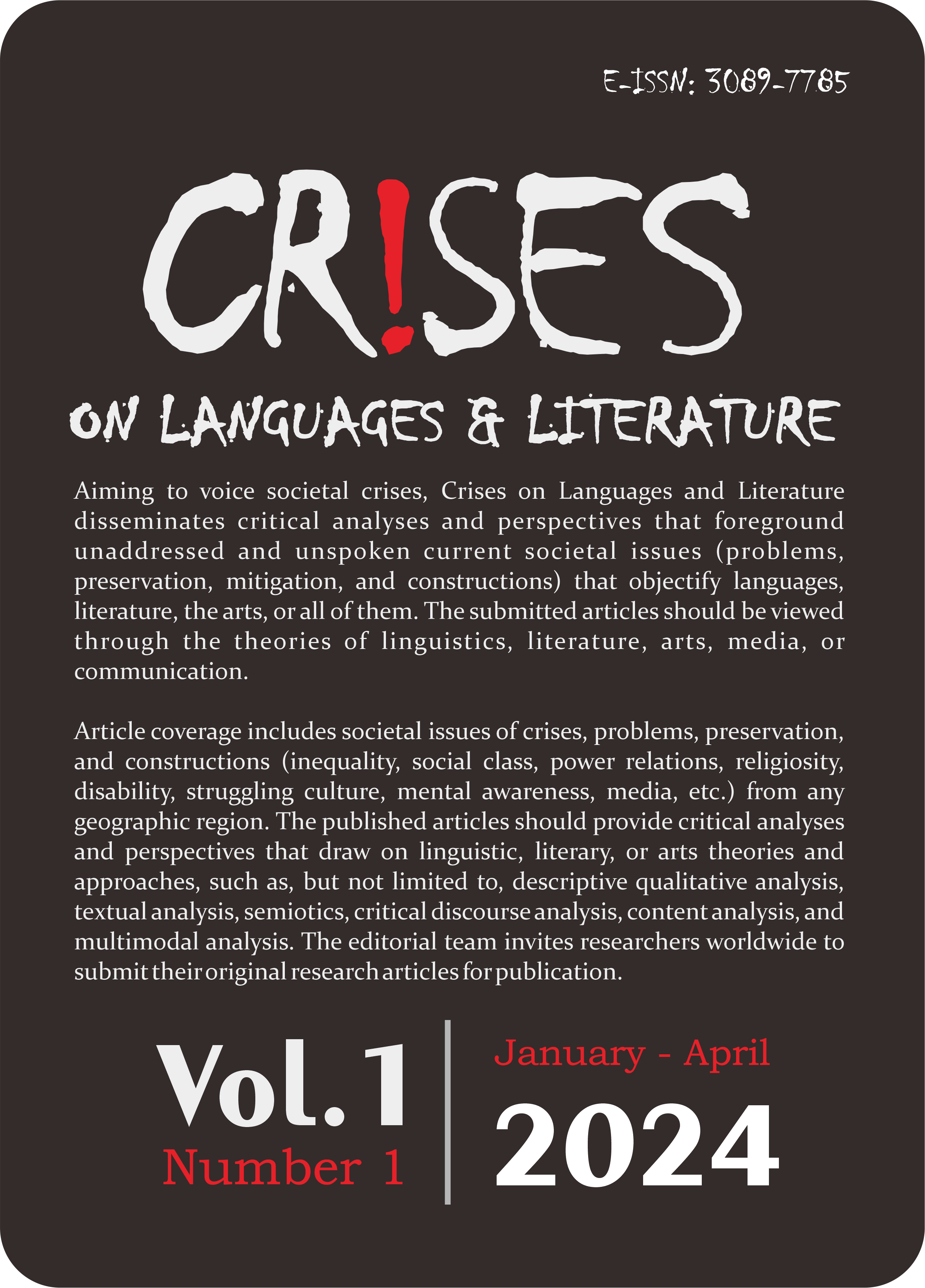Afiksasi Pembentukan Verba dalam Bahasa Indonesia Ragam Informal pada Webtoon yang Berjudul “Ngopi, Yuk!”
Published 2024-04-30
Keywords
- affixation,
- verb formation,
- Indonesian,
- informal variation,
- weebtoon
How to Cite
Copyright (c) 2024 Dini Gilang Sari, Mahmud Fasya

This work is licensed under a Creative Commons Attribution 4.0 International License.
Abstract
There is a unique structure in every language. The existence of unique languages comes from the study of language diversity. This study focuses on the use of verb formation affixes in informal Indonesian. The data for this study comes from a comic entitled “Ngopi, yuk!” by Assyifa S. Arum and Romy Hernadi on Webtoon. The data in this study is limited to the first 15 episodes. The results of this study indicate that there are five verb formation affixes which include (1) the prefixes me-, di-, ber-, ke-, ter-, per-, and nge-; (2) the suffixes -in, -an, and -kan; (3) the confix ke-an; (4) the simulfix N-; and (5) the combination of the affixes N-in, di-in, memper-kan, di-kan, and me-kan. In addition, the verb formation affixes in informal Indonesian on Webtoon entitled “Ngopi, yuk!” dominantly use the morpheme -in and the morpheme N-, namely, nine data and eight data.
References
- Croft, W. (2002). Typology and Universals. Cambridge: Cambridge University Press. https://doi.org/10.1075/z.176.06ch2
- Diyanti, V. (2020). Penggunaan Bahasa Gaul dalam Webtoon “Just Friend” Karya CL Nov. In Prosiding Seminar Nasional Linguistik dan Sastra (SEMANTIKS) (pp. 323–333).
- Greenberg, J. (1974). Language Typology. A Historical and Analytic Overview. The Hague, Netherlands: Mou.
- Harya, T. D. (2016). Language Change and Development: Historical Linguistics. Premise: Journal of English Education and Applied Linguistics, 5(1), 103–117. https://doi.org/10.24127/pj.v5i1.418
- Kadarisman, A. E. (2005). Linguistic Relativity, Cultural Relativity, and Foreign Language Teaching. TEFLIN Journal, XVI(1), 1–25. https://doi.org/https://doi.org/10.15639/teflinjournal.v16i1/1-25
- Kridalaksana, H. (1993). Kamus Linguistik. Jakarta: PT Gramedia Pustaka Utama.
- Kridalaksana, H. (2009). Pembentukan Kata dalam Bahasa Indonesia. Jakarta: Gramedia Pustaka Utama.
- Natsir, M., Saragih, B., Mira A., P. S., & Dewi, R. (2020). Language Change in Social Media (Instagram). Randwick International of Social Science Journal, 1(2), 394–401. https://doi.org/10.47175/rissj.v4i3.745
- Sneddon, J. N. (2003). Diglossia in Indonesian. Bijdragen Tot de Taal-, Land- En Volkenkunde, 159(4), 519–549.
- Sneddon, J. N. (2006). Colloquial Jakartan Indonesian. Canberra: Pacific Linguistics.
- Song, J. J. (2001). Linguistic Typology: Morphology and Syntax. New York: Routledge.
- Song, J. J. (2018). Linguistic Typology. Oxford, UK: Oxford University Press.
- Sunarti, & Winarti, D. (2021). Fenomena Afiks Informal Bahasa Indonesia dalam Media Sosial Twitter. Deskripsi Bahasa2, 4(1), 34–43.
- Velupillai, V. (2012). An Introduction to Linguistic Typology. Amsterdam: John Benjamins Publishing Company. https://doi.org/10.1075/z.176
- Zen, E. L. (2011). Afiks Non Standar dalam Bahasa Indonesia Ragam Informal. Lingua: Jurnal Ilmu Bahasa Dan Sastra2, 6(1).

